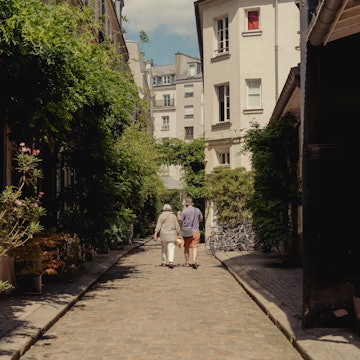
How to take a day trip to Oxford from London



Find out how to make the most of a visit to the historic university town of Oxford on a day trip from London. Sergii Figurnyi/Shutterstock
So you’ve traveled to England, and then you realize that there just isn't time to see it all. There’s so much to do just in London, and then there are England’s famous national parks, cool coastal towns, and hip cities to explore. What do you do?
Well, the good news is that it's easy to take a trip to London and visit Oxford on a day trip, giving you plenty of time to see the historic university, pop into a museum (or two), enjoy a pub meal and mess around on the river, before returning to the capital. It's a great way to take in London's sights and also get a taste of rural England.
Here's everything you need to know to visit Oxford on a day trip from London, and how to make the most of your time when you get there.
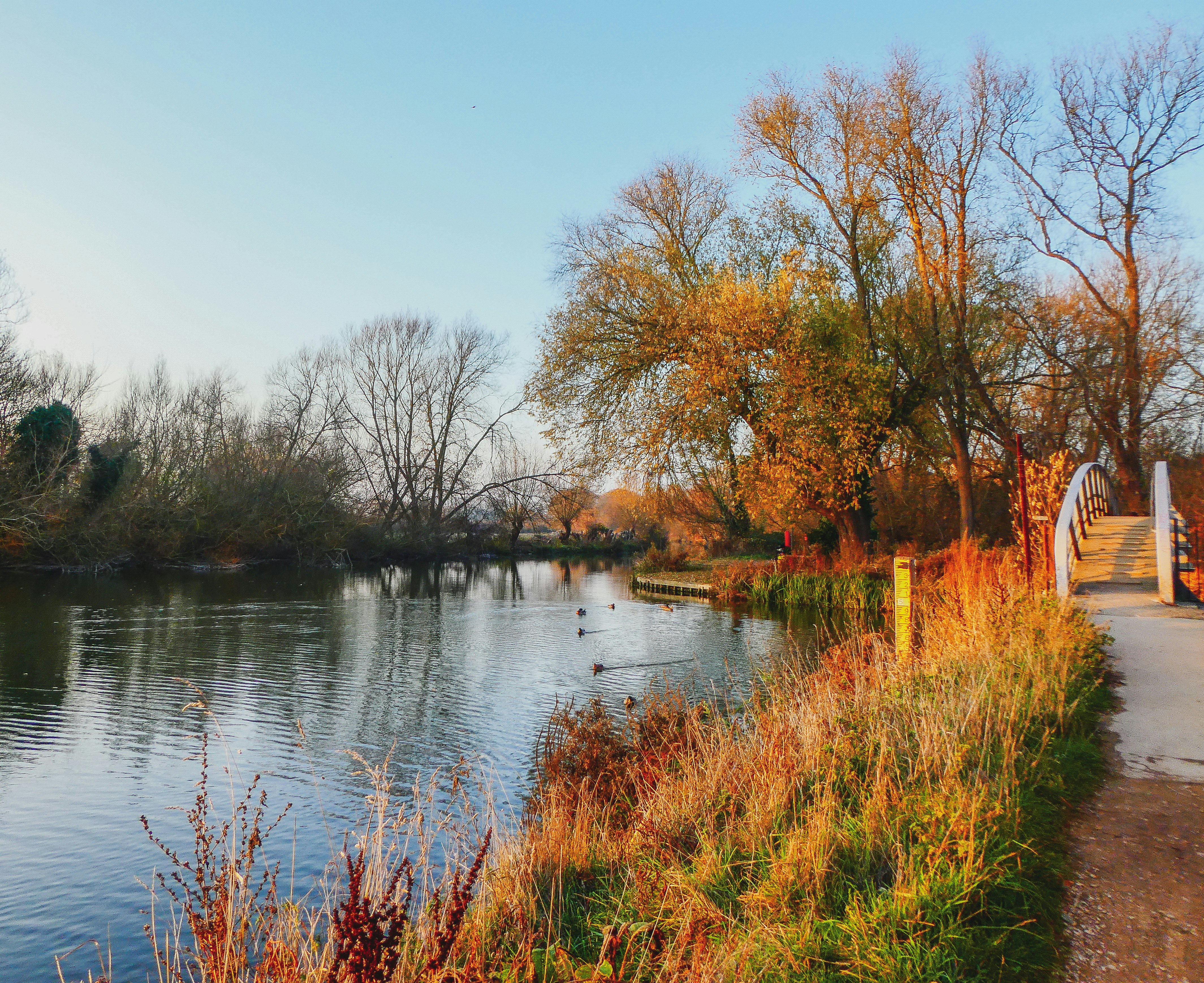
When is the best time of the year to go to Oxford?
Summer is the best time to visit both London and Oxford. You’ll have more daylight hours to explore, so you can stay longer, and students are off campus, so there'll be ample opportunity to tour Oxford’s colleges. You can even pack your swimming gear and take a dip in one of Oxford’s wild swimming spots. Oxford's annual family-friendly Alice's Day is held in July, inspired by Christ Church graduate and lecturer, Lewis Carroll. If you come in August, Oxford’s Foodies Festival coincides with the Bank Holiday weekend.
However, summer also means there are plenty of other tourists in Oxford, including international school groups (you’ll see hordes of teens all wearing the same lanyards or backpacks wandering the city). If you've prebooked entry tickets anywhere, allow plenty of time to walk behind slow-moving pedestrians on narrow pavements.
The weather can be a bit of a gamble in spring, so check the forecast. University exams typically take place from mid-May to mid-June, and many university college campuses are partially closed during the exam season. There’s also the Town & Gown 10km fundraising run in May to consider, when city center streets are closed.
Early autumn is a good time to visit, but go before the clocks change and night starts to fall even earlier. In early autumn, you can enjoy a full day in Oxford without the busyness of summer, but with the potential for gorgeous fall colors. Curious minds should time their visit to coincide with the IF Oxford festival of ideas in October.
A day trip in winter is a challenge. Days are short, the weather is cold, and riverside paths and meadows can be muddy (bring Wellington boots), but there is a gorgeous Christmasy vibe here in December.
What’s the best way to get to Oxford?
Trains can get you to Oxford from major hubs like London, Reading or Bristol with minimum fuss, but tickets can be expensive; the further ahead you book, the better the price. Consider using an app like The Trainline, which will let you know if there are cheaper options such as split fares (buying multiple single tickets instead of booking one return journey), or whether you can save by choosing a less pricey but slower route.
Alternatively, the Oxford Tube coach service runs between London and Oxford, with departures every 10 to 20 minutes during the day. While it’s not quite as quick and comfortable as the train, it is cheaper and runs all night, so there'll be no running for the last train back to London! The service can also carry a couple of bikes per coach on a first-come, first-served basis.
Taking a car is probably the least convenient way to get to Oxford on a day trip as traffic on the motorway can be unpredictable. It’s only recommended if you are in a group and the coach or train fares outweigh the cost of car hire, fuel and parking – or if you want to stop at other spots beyond the city, such as historic houses, quaint villages and grand gardens nearby.
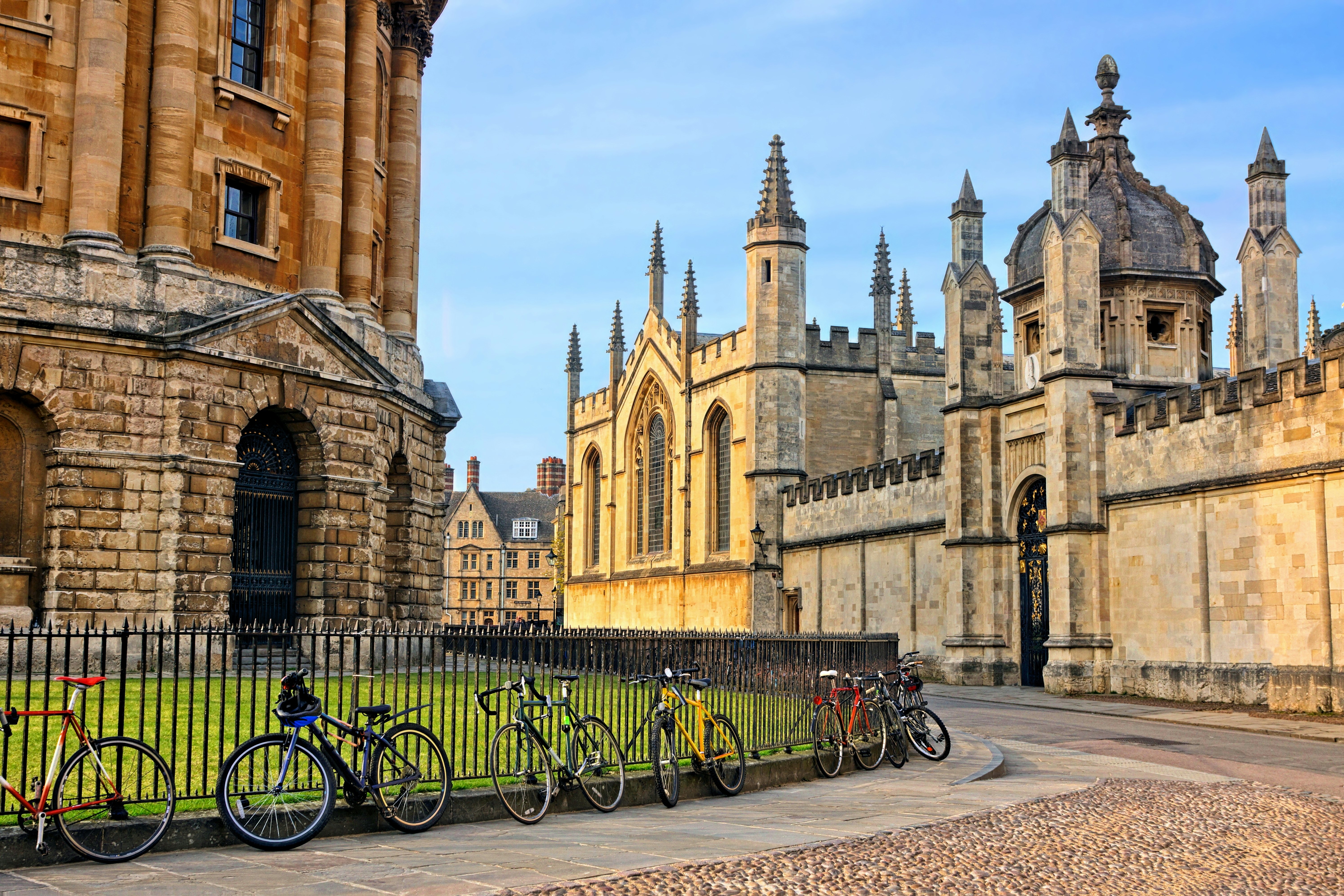
How do I get around in Oxford?
The best way to get around in Oxford is on foot, although if you travel further afield and want to zip back to the city center quickly and easily, local buses run frequently. Download the Stagecoach app to purchase a DayRider ticket for unlimited bus travel within Oxford (handy if you're traveling with kids).
Cycling is another excellent way to get around, and Oxford has numerous bike paths used by Oxford students and lecturers. You can carry your own bike on the train, or contact Oxbykes, a local outfit that allows you to prebook a rental bike online.
If you arrive in Oxford by car, it's best to “park and ride” by catching a shuttle from one of the designated car parks on the outskirts of town. Parking in central Oxford is time-limited and expensive (and parking inspectors are ever-vigilant). You don't want to spend the day moving your car every other hour. Once in town, it's easy to get around on foot.
Top tips for visiting Oxford
One of the main joys of visiting Oxford lies in the sense of intellectual history being forged in the centuries-old colleges, each with its own unique collection of Gothic chapels, secluded cloisters and tranquil quadrangles.
Certain buildings stand out, from the domed and glowing columned hall known as the Radcliffe Camera to the late Iraqi-British architect Zaha Hadid’s modernist library in St Antony’s College. Irresistible old pubs dot Oxford’s central alleyways, some doubling as literary landmarks, like the Eagle & Child (closed until 2027) and Lamb & Flag, regular haunts of writers such as CS Lewis and JRR Tolkien.
And then there are the wide open-water meadows that give Oxford its bucolic country vibe, despite the population density. In summer, cows and horses graze right down to the edge of the River Thames, while in winter, walkers in designer Wellington boots pick paths through waterlogged fields. There is a lot more to see and do beyond the following suggestions, but on a day trip, here are some of the highlights to tick off your list.

Explore at least one Oxford University college
The university is very much Oxford’s defining feature. Consistently ranked among the world’s most prestigious academic institutions, the University of Oxford can trace its history back to the 11th century. Over the following two centuries, a loose association of independent colleges developed, before being gathered together to create the modern university, and many of the original medieval buildings remain.
If you only visit one college, make it Christ Church – the quintessential Oxford college. Its dramatic Great Hall once housed the English parliament under King Charles I. Hear the echo of footsteps as you stroll the quad, then admire the college's gallery of Renaissance masterpieces and the 12th-century cathedral. Tickets for self-guided tours are released each Friday for the week ahead.
Another rewarding stop is New College (it’s only 650 years old) with its walled gardens and five quadrangles, including one that was inspired by the Palace of Versailles. Trinity College, Magdalen College and All Souls College also welcome visitors.
To get a sense of all the incredible brainpower that made Oxford famous, sign up for a guided tour of the beautiful domed reading rooms and underground tunnels of the Bodleian Library, one of the oldest libraries in Europe, dating back to 1488.
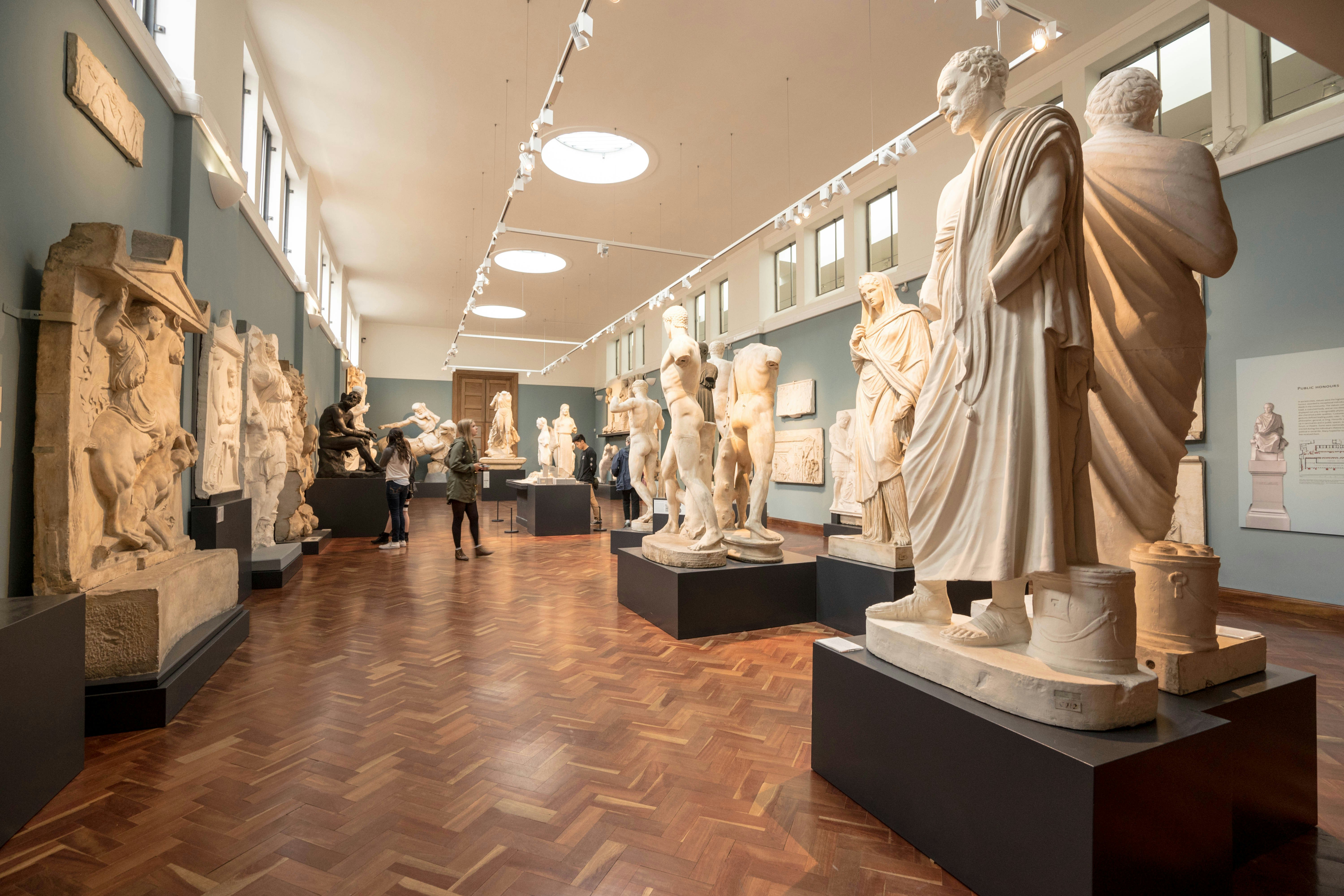
Pop into a museum or two
Oxford's world-famous museums serve as an impressive repository of artifacts from around the world, and in recent years, curators here, as in the rest of the country, have been forced to grapple with the colonial legacy of their collections while also trying to protect and hold on to their treasures.
In a light-filled modern building just north of the city center, the Ashmolean Museum is a worthy rival to London’s British Museum. It's an incredible showcase of art, artifacts and archaeological finds from around the world, including treasures from the Palace of Knossos in Crete.
The Pitt Rivers Museum is a classic “cabinet of curiosities” museum, established by a Victorian general who donated his globe-spanning collection of 26,000 ethnographical oddities to the university. There's much to see, and the museum is also undergoing a process of critical reflection.
Housed in a grand Victorian conservatory, the Oxford University Museum of Natural History inspires future environmentalists, while Oxford’s literary heritage – from ancient myths and legends to classics of children’s literature – is celebrated at the Story Museum.
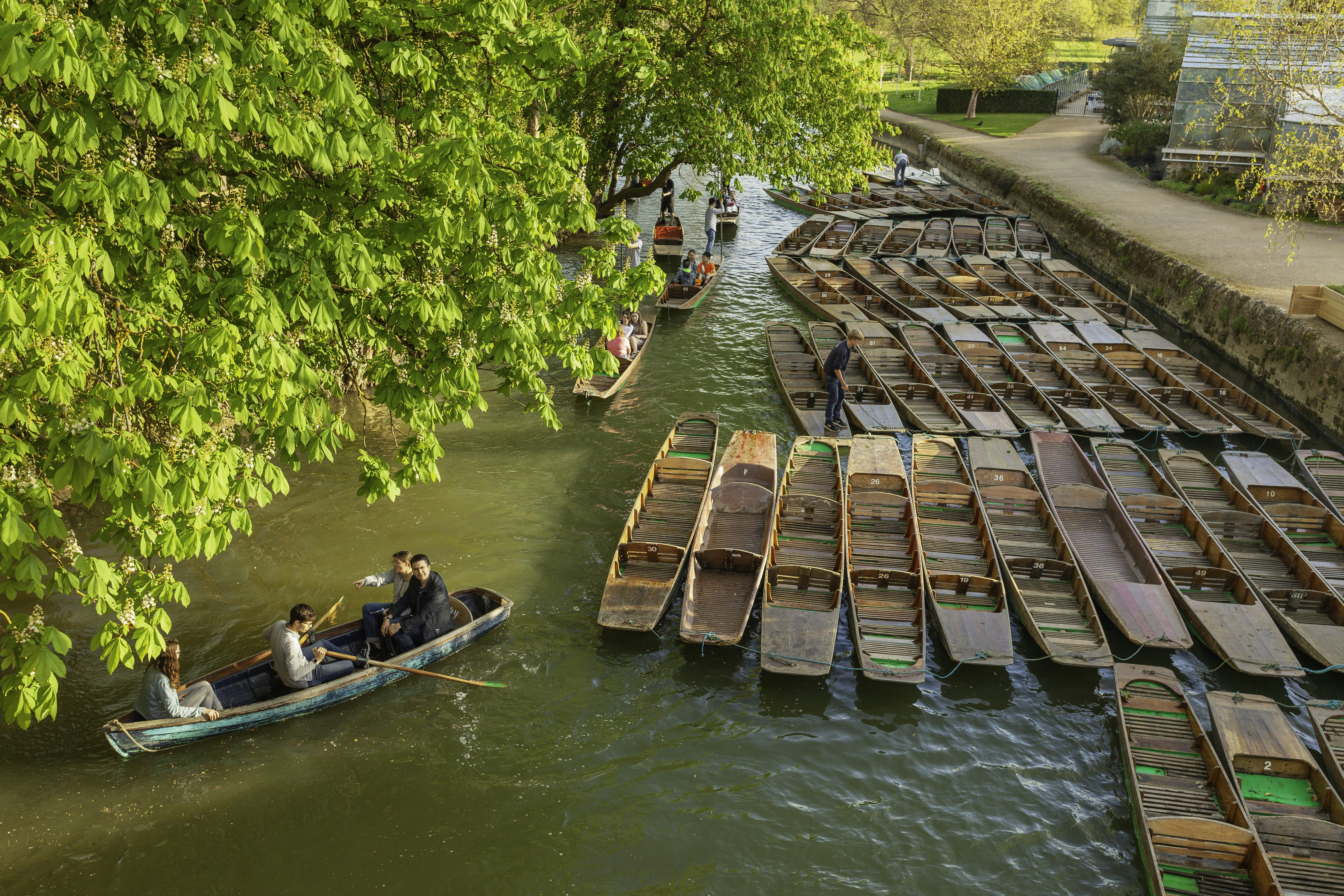
Go boating or walk along the river
The wellness benefits of spending time in "blue spaces" are not news to the residents of Oxford. The city has three main watercourses running through its urban streets – the River Cherwell, the River Thames (known locally as the Isis), and the Oxford Canal (completed in 1790), which terminates at Isis Lock.
Whiling away languid days on the river – or, as Oxford-educated writer Kenneth Grahame put it in The Wind in the Willows, “messing about in boats” – is what an Oxford summer is all about. Salter's Steamers runs boat trips on the Thames, and rents out punts, rowboats and motorboats. The Victorian-era Cherwell Boathouse also rents out punts, or you can watch punters head off from the deck of its award-winning restaurant.
You don’t have to get on the water to appreciate it. There are peaceful walking paths beside the Oxford Canal that meet the Thames and Port Meadows. Taking some time to unwind in these green and blue spaces is very reviving after a day of sightseeing.
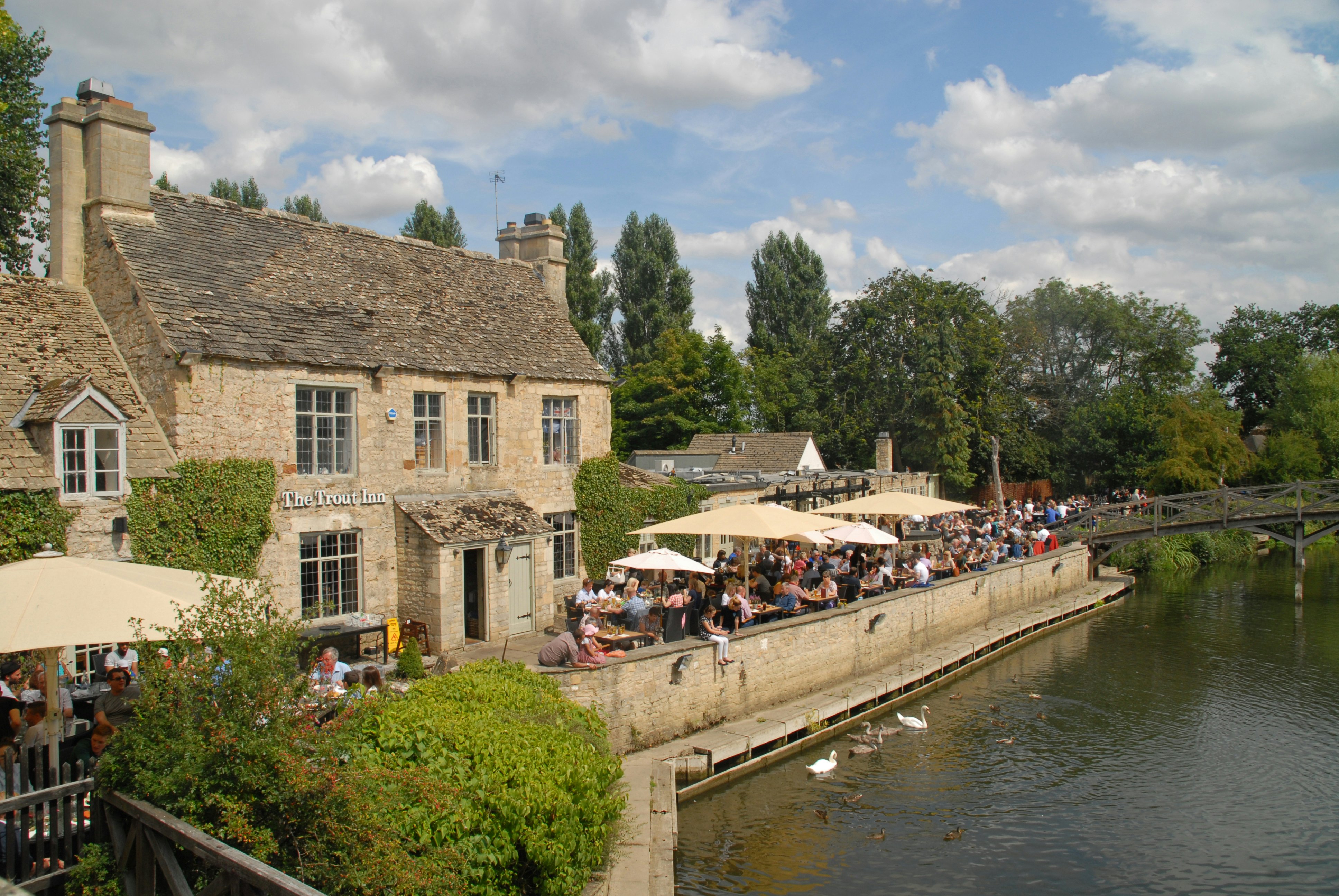
Sit down for a drink or meal at a riverside pub
Oxford has plenty of excellent pubs for a pint or a meal, both in town and in neighboring areas. Some have links to Oxford’s literary history, while others are popular with students today, with a lively, youthful energy.
Check out the Turf Tavern in town; dating from around 1381, it’s a medieval rabbit warren of nooks and crannies tucked down an alleyway. In the eastern part of Oxford, The Rusty Bicycle serves good pizza and has a nice beer garden and studenty vibe. Over on the west side, The Jericho Tavern is a buzzing spot with live music and food.
If you’re just here for the day, you might want to kill two birds with one stone and enjoy a pub meal with a river view, so you can make the most of Oxford’s bucolic landscapes. A fair walk along the Thames from the center, the 400-year-old Trout Inn is close to the ruins of Godstow Abbey, and you can drink or dine with views over a gurgling weir. Book ahead; it’s worth the steps!
Vegetarians and vegans, take note – The Punter is not too far from Oxford train station, and it offers a gourmet plant-based menu with tables overlooking the water. Heading further downstream, The Folly serves excellent (pricey) modern British cuisine in a terrace floating on the Thames. Set in what was originally a waterfront warehouse, Head of the River is a popular central pub serving classic British pub fare; it's part of the Fuller's chain.
For a cheap and cheerful Thames Path stop, head to The Medley (open from April until September only), where pizza and drinks are served in a sprawling, grassy beer garden.
What should I pack for an Oxford day trip?
While it makes sense to wear clothes that are practical for walking (good walking shoes, comfy attire), you may want to dress a little more smartly if you’re planning to splurge on a more upmarket meal. This said, England has a strong outdoors walking culture, so turning up almost anywhere in hiking clothes and boots will not raise any eyebrows.
While the weather is fairly stable in this part of England, it pays to check the forecast for your day trip in the morning just to be sure an unexpected rain shower hasn’t blown into town. Temperatures are usually a few degrees cooler than in London, so even if it’s sunny and warm when you walk out the door, bring a warmer layer too, just to be safe.
Although it doesn’t happen that often, there can be delays on the railway line between London and Oxford, so it pays to have something warm to throw on in case you’re out later than you expect!















